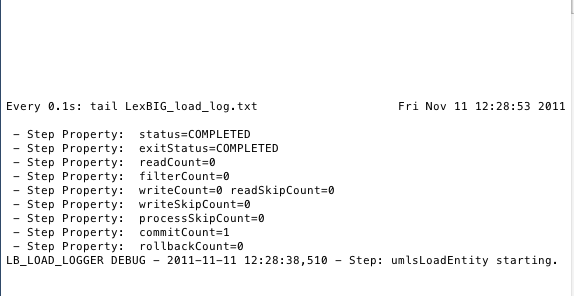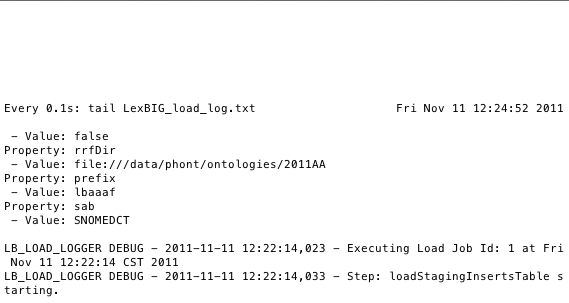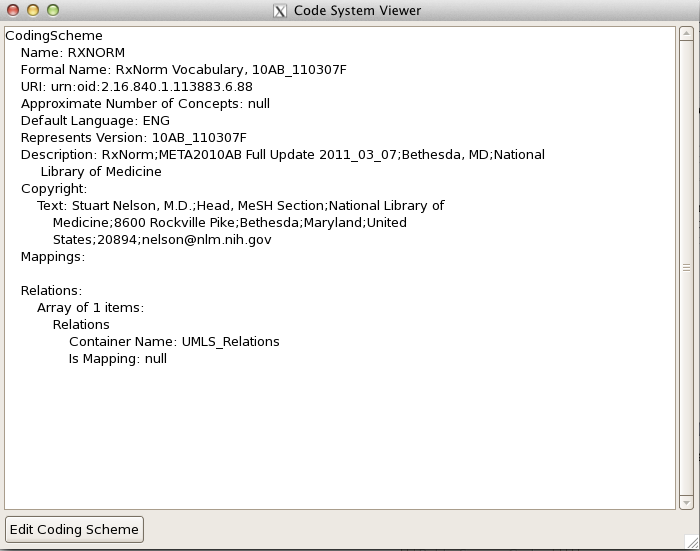Loading from UMLS RRF (Rich Resource Format) Files
The Unified Medical Language System (UMLS) regularly releases a set of terminologies in a large set of files referred to as the UMLS Metathesaurus. LexEVS can load the entire set or individual files from this file set using the LexEVS UMLS Batch loader.
We briefly mention the UMLS Metathesaurus tools on this page. Since all documentation for these are maintained at the website linked to below we won't repeat it here. As well LexEVS has a special purpose RRF loader which loads an NCI version of an entire MetaThesaurus. This is dealt with in the documentation for the NCI loaders and we won't repeat it's use here.
Step |
Action |
|---|---|
1 |
Download the UMLS Metathesaurus to a local folder: |
2 |
Subset the desired terminology (optional): |
3 |
Set command line options in the loading script: Memory Handling The batch loader is not memory dependent, but at the end of the load the resource is indexed and indexing does require at least 3 GB of memory. Increasing memory can provide faster indexing time. |
4 |
Find the SAB (RSAB) in the MRSAB.RRF file |
5 |
Load the Terminology from the command line referencing the SAB. ./LoadUmlsBatch.sh -in "file:///data/phont/ontologies/2011AA" -s "SNOMEDCT" Note: The file path is pointing to the directory directly above the .RRF files. |
6 |
Monitor output (optional): watch -n .1 -d tail LexBIG_load_log.text. Sample output of an early load step is as follows: |
Restarting an RRF Load
Bear in Mind!
Killed processes cannot be restarted. The load can recover from an application error, but not from an outside activity that stops the process
Step |
Action |
|---|---|
1 |
Open the lbGUI |
2 |
Find in the table the terminology with the broken or stopped load |
3 |
Highlight and double click the terminology row in the table |
4 |
On the resulting window note for the following command line execution: |
5 |
Using the LexEVS utilities restart the load of the RRF source: {LEXEVS_HOME}/admin
For Windows installation use the following command: ResumeUmlsBatch.bat-in file:///home/LargeStorage/ontologies/rrf/RXNORM/2011AA/ -s RXNORM -uri "urn:oid:2.16.840.1.113883.6.88" -version "10AB_110307F" For Linux installation use the following command: ./ResumeUmlsBatch.sh -in file:///home/LargeStorage/ontologies/rrf/RXNORM/2011AA/ -s RXNORM -uri "urn:oid:2.16.840.1.113883.6.88" -version "10AB_110307F" |





